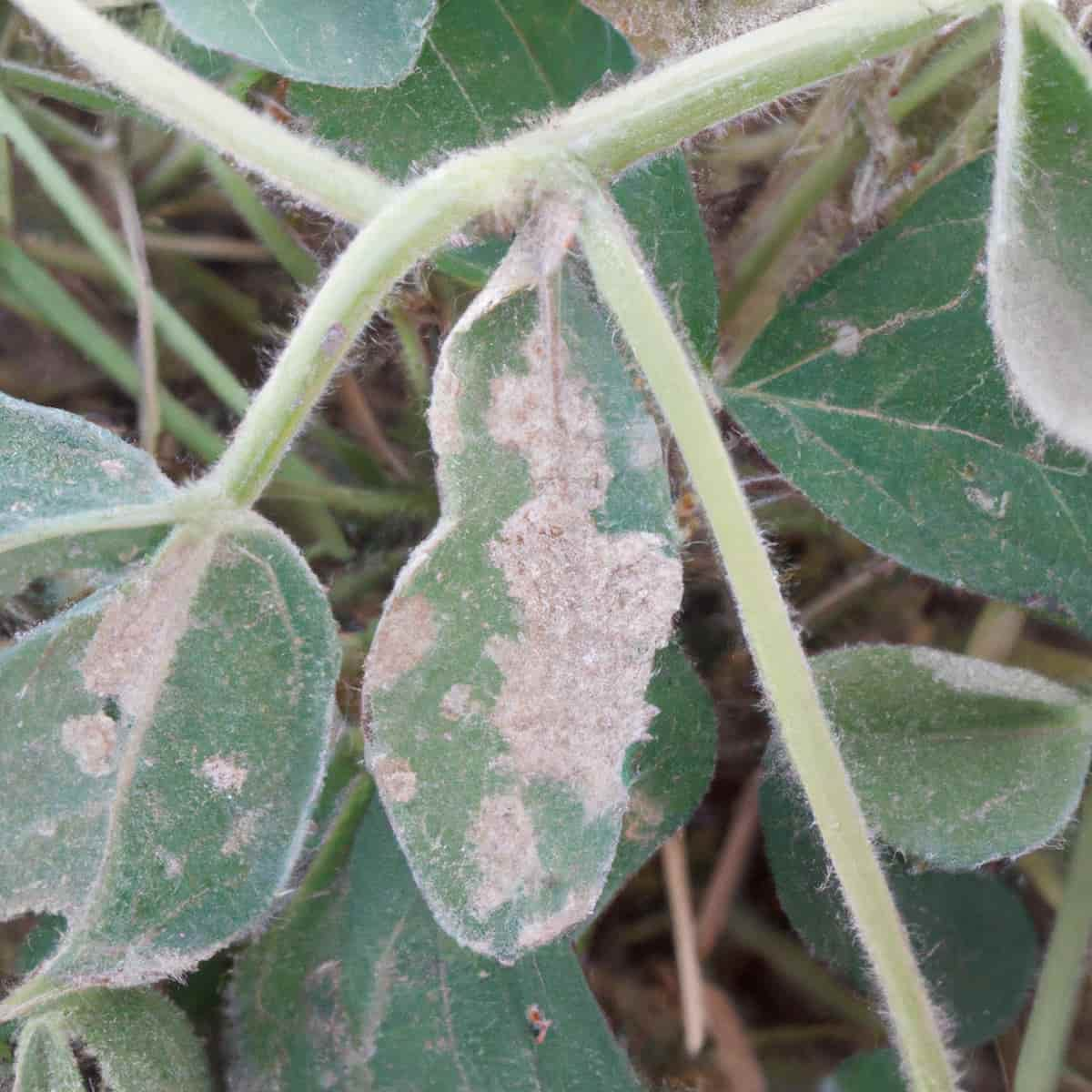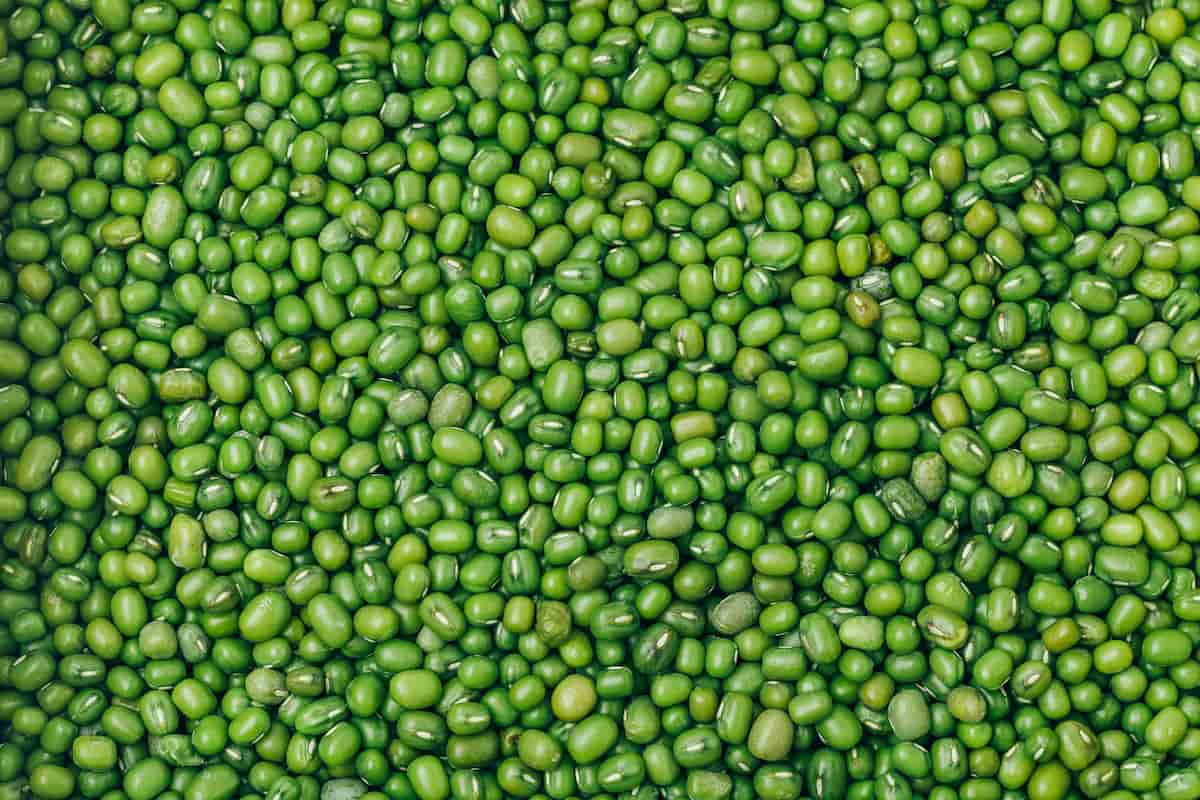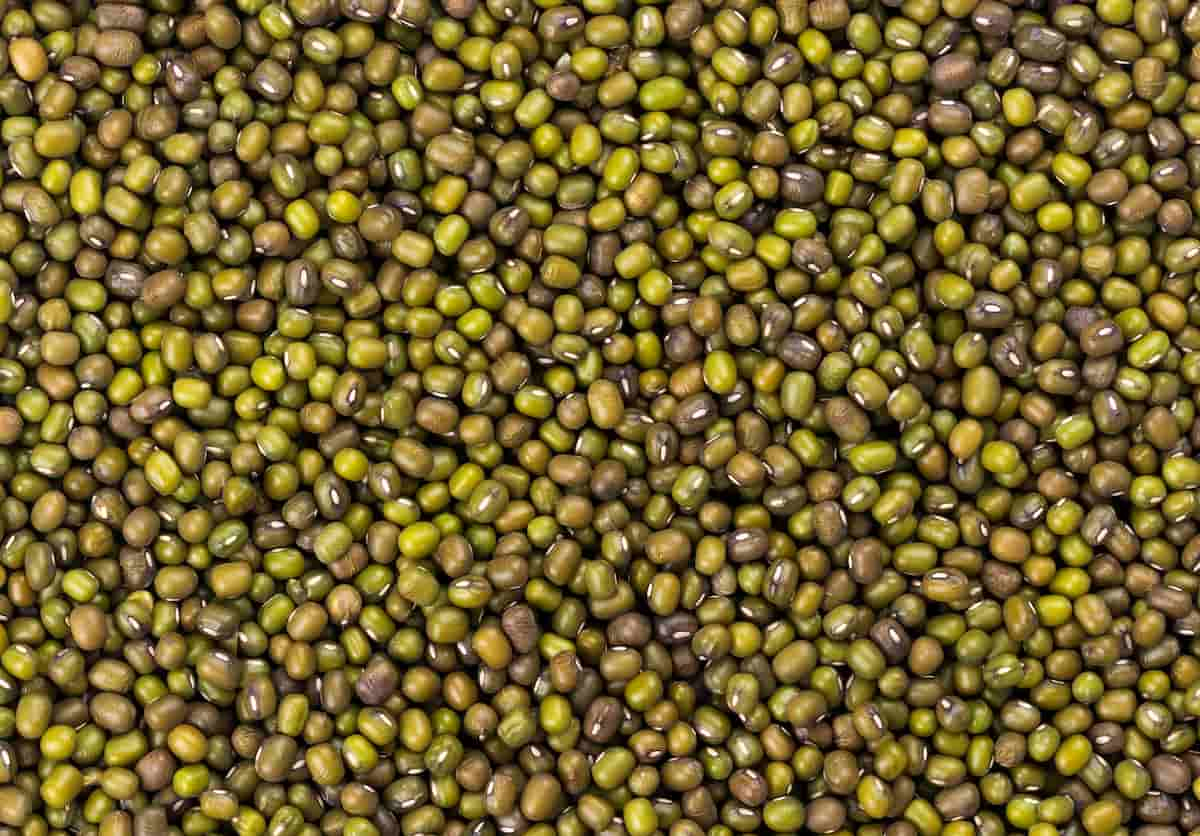Powdery mildew is a fungus affecting multiple plant varieties, including green gram. It is caused by the fungus Erysiphe polygoni and can affect plants at any developmental stage. Symptoms of powdery mildew on green grams include white powdery spots on the leaves, stems, and legumes, stunted growth, and decreased yield. The fungus that causes powdery mildew spreads by releasing spores transported by wind, water, or insects.

The disease thrives in warm, humid conditions and can swiftly spread in crowded or poorly ventilated-fields. Managing powdery mildew on green gram includes cultural, chemical, and biological measures. Planting resistant varieties, maintaining proper plant spacing, and avoiding overhead irrigation are examples of cultural practices. At the first evidence of disease, fungicides such as sulfur, triadimefon, or tebuconazole are used for chemical control.
Utilizing natural enemies, such as predatory mites, that prey on the powdery mildew fungus constitutes biological control. Controlling powdery mildew in green gram requires early detection and prompt management. Regular crop monitoring, the use of disease-resistant varieties, and the implementation of appropriate cultural practices can reduce the severity of the disease and increase crop yields.
Powdery Mildew Management in Green Gram/Mung Bean
The Causal Organisms of Powdery Mildew Disease
Powdery mildew disease in green gram is caused by a fungus called Erysiphe polygoni. This fungus grows on the surface of leaves and sends haustoria into the plant’s epidermal cells. It produces conidiophores that bear conidia in short chains. These conidia are hyaline, thin-walled, and single-celled. As the season progresses, black, globose structures called cleistothecia to appear, each containing 4-8 asci. Each ascus contains 3-8 ascospores, which are elliptical and hyaline.
The Disease Cycle of Powdery Mildew Disease
The powdery mildew disease cycle in green gram begins with the fungus overwintering as cleistothecia in infected plant debris. In the spring, ascospores are released from the cleistothecia, which can cause primary infections in healthy plants. The fungus then produces air-borne conidia, which can spread the disease to other plants. Rain splash can also contribute to the spread of the disease by carrying conidia from infected plants to healthy ones. The fungus is an obligate parasite, which means it cannot survive without a host plant.
Causes/Conditions Favorable for Powdery Mildew Disease in the Field
Cool, wet weather favors green gram powdery mold. The disease thrives at 10–20 oC. The fungi also thrive in 90% humidity. The fungi survive and infect healthy plants, causing powdery mildew. The disease spreads in crowded or poorly ventilated fields.
Symptoms of Powdery Mildew Disease
- White powdery spots on leaves and other green parts later turn dull-colored.
- The circular patches, which progressively grow larger and cover the underside of the leaves,
- When an infection is severe, a whitish powdery growth fully covers both surfaces of the leaves.
- Parts that are severely impacted become shriveled and warped.
- In severe infections, the foliage turns yellow, and early defoliation results.
- Infected plants may also be pushed to mature, resulting in significant yield losses.
- The pathogen can persist in an oidial form on various hosts during the off-season and has a broad host range.
- Oidia produced during the growing season are carried in the air, spreading the illness.
Powdery Mildew Disease Yield Loss in Green Gram
Powdery mildew disease in green gram can cause significant yield losses. On average, the disease can lead to a 5% to 10% reduction in yield in every region. However, yield losses can go up to 30% in severe conditions. Yield losses are mainly caused by premature defoliation and forced maturity of infected plants, resulting in lower yields.
In case you missed it: Melon Thrips Management in Eggplant: Symptoms, Treatment, Chemical, Biological, Natural, and Organic Control

Powdery Mildew Management in Green Gram by Cultural Method
- Cultural methods are effective for managing powdery mildew disease in green gram.
- These methods include crop rotation, planting of resistant varieties, and adequate spacing between plants for good ventilation.
- Proper irrigation and fertilization practices can also help promote healthy plant growth and reduce disease risk.
- Timely removal of infected plant debris and proper disposal can also prevent disease spread.
Powdery Mildew Management in Green Gram by Biological Method
Biological control methods are a sustainable and environmentally friendly approach to managing powdery mildew in green gram.
- One effective method is the application of biocontrol agents like Trichoderma harzianum, Bacillus subtilis, and Pseudomonas fluorescens.
- These agents can colonize plant surfaces and reduce the severity of the disease.
Powdery Mildew Management in Green Gram by Chemical Method
Chemical control of powdery mildew in green gram should be the last option and always be combined with cultural and preventive measures.
- Some effective fungicides are wettable sulfur, triflumizole, and myclobutanil.
- Spray Carbendazim 500 g or wettable sulfur 1500g/ha or Propiconazole 500 ml/ha at the initiation of the disease and ten days later for better control.
Powdery Mildew Management in Green Gram by Organic/Natural Method
Organic methods can be an effective way to manage powdery mildew disease in green gram. Milk-water solutions, garlic or sodium bicarbonate solutions, and wettable sulfur are natural fungicides that can be applied to the leaves every second day. NSKE at 5% or neem oil at 3% can be sprayed twice at 10-day intervals from the initial appearance of the disease to control its spread. Eucalyptus leaf extract at 10% can be sprayed at the initiation of the disease and again ten days later.
Preventive Measures for Control of Powdery Mildew Disease
- These measures include planting crops with sufficient spacing to allow for good ventilation, selecting resistant or resilient varieties for planting, regular monitoring of the field for symptoms of the disease, and removing infected leaves when the first spots appear.
- It is also important to avoid touching healthy plants after touching infected plants and to practice proper tillage after harvest and before planting to break down crop residue and destroy disease pathogens.
- Implementing these preventive measures can help to minimize the incidence and spread of powdery mildew disease in green gram, ultimately leading to healthier plants and increased yield.
In case you missed it: Armyworms Management in Eggplant: Symptoms, Treatment, Chemical, Biological, Natural, and Organic Control

Conclusion
Powdery mildew disease in green gram can cause significant yield losses. Effective management strategies include preventive measures, cultural methods, biological control, natural and organic methods, and chemical treatments. Integrated approaches that combine these methods can provide effective control.
- Beneficial Insects in Pest Management
- Natural Solutions for Pest Control in Flower Gardens
- Types of Fungicides Used in Agriculture
- Common Issues in the Fruit Development Stage of Pomegranate Farming
- Fruit Development Issues in Papaya: Easy Solutions and Treatment
- Soil-Borne Diseases and How to Protect Your Plants
- Practices to Prevent Disease Spread in the Garden
- From Wilted to Thriving: How to Treat Root Rot Naturally in Houseplants
- Natural Remedies to Cure Brown Spots on Fig Tree Leaves